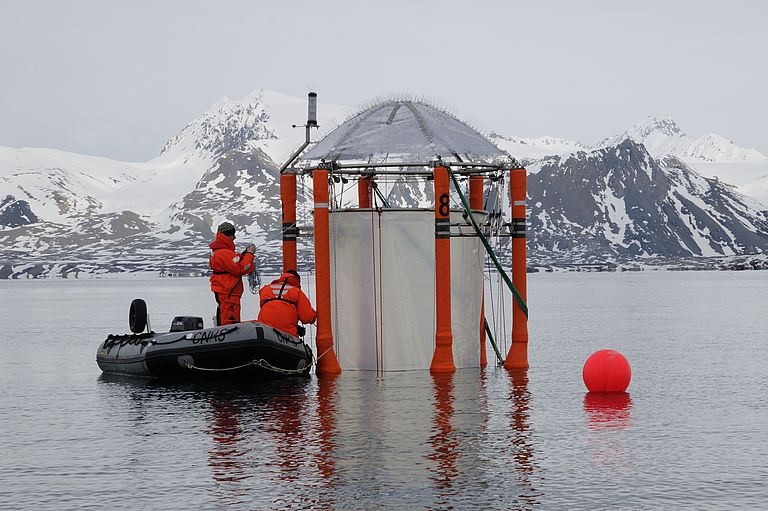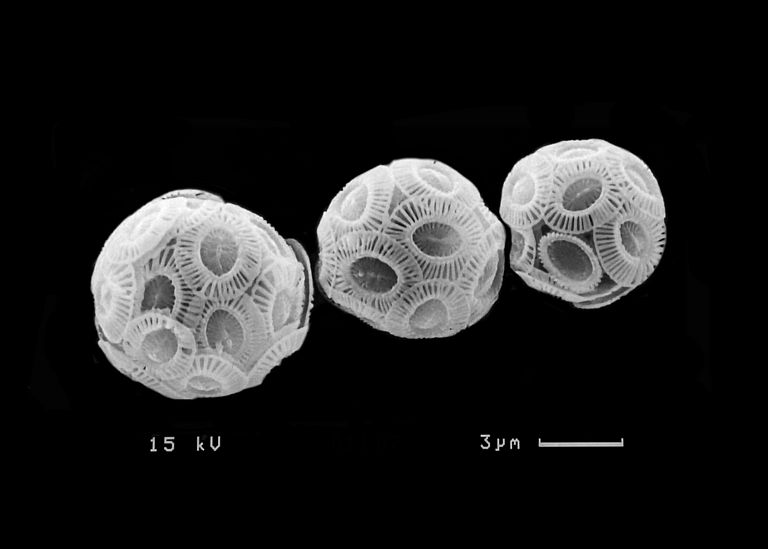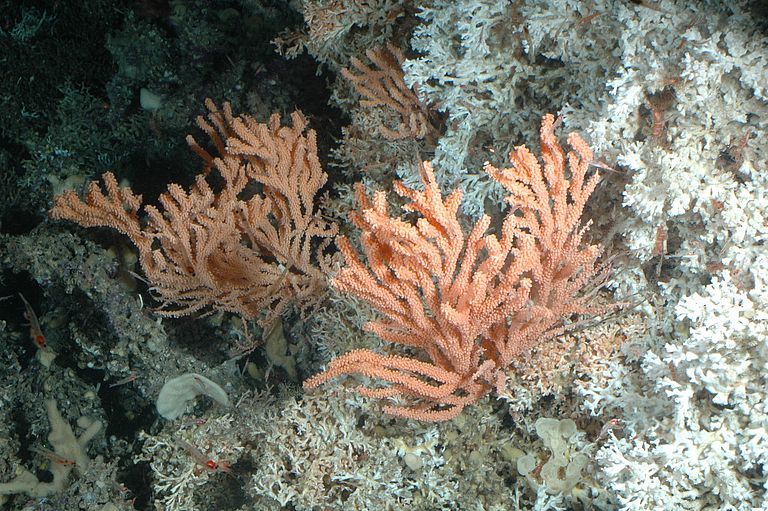New challenges for ocean acidification research
Experts look back at a successful decade and carve out future priorities
Over the past decade, ocean acidification has received growing recognition not only in the scientific area. Decision-makers, stakeholders, and the general public are becoming increasingly aware of “the other carbon dioxide problem”. It is time to reflect on the successes and deficiencies of ocean acidification research and to take a look forward at the challenges the fastest growing field of marine science is facing. In the January issue of the journal “Nature Climate Change” Ulf Riebesell, professor for Biological Oceanography at GEOMAR Helmholtz Centre for Ocean Research Kiel, and Jean-Pierre Gattuso from the French Centre National de la Recherche Scientifique (CNRS) urge the international scientific community to undertake a concerted interdisciplinary effort. According to the two experts, future ocean acidification research will have to deal with three major challenges: It needs to expand from single to multiple drivers, from single species to communities and ecosystems, and from evaluating acclimation to understanding adaptation. “The growing knowledge in each of the diverging research branches needs to be assimilated into an integrated assessment”, Prof. Riebesell points out.
For the scientific community, it is obvious that ocean acidification does not occur in isolation. Rising temperatures, loss of oxygen, eutrophication, pollution and other drivers happen simultaneously and interact to influence the development of marine organisms and communities. “The effects can be additive, synergistic or antagonistic and it is generally not possible to extrapolate from single- to multiple-driver responses”, Prof. Riebesell explains. “But with an increasing number of parameters, experiments become increasingly challenging in terms of time, space and costs. Also, it becomes ever more difficult to compare and verify results of similar studies.”
There is now an impressive body of scientific literature on how individual species react to ocean acidification as a single driver. Many calcifying organisms such as corals, mussels or snails will find it more and more difficult to build their shells and skeletons. The extra energy needed for calcification will be lacking for other biological processes, such as growth or reproduction. „But an open question is to what extent results from short-term, single-driver laboratory experiments can be extrapolated to the real world“, Dr. Gattuso states.
As shown in laboratory experiments, evolutionary adaptation to ocean acidification is possible. The larger the population size of a species and the shorter its generation time is, the higher the chances are that it can adapt to new environmental conditions through selection or mutation. “But can adaptation keep up with the fast changes we are experiencing today? Are the organisms able to maintain their functions within the changing ecosystem,” Dr. Gattuso wonders.
To make further significant progress in the future, ocean acidification research has to integrate the knowledge gained in its three diverging branches – addressing multiple stress factors, competitive and trophic interactions, and adaptation through evolution. “This requires an interdisciplinary effort, for example through long-term experiments that examine the effects of multiple drivers over many generations at the community level. “Experiments have to be tightly integrated with field studies and model simulations”, Prof. Riebesell recommends. “A key factor in this process will be that funding opportunities are opened up for large-scale integrative projects, long-term monitoring and international collaborations.” Now that a basic understanding of ocean acidification impacts is developing, it is critical to pay special attention to aspects relevant for society. “This will then pave the way to develop management options and provide science-based policy advice.”
Original Publication:
Riebesell, U., Gattuso, J.-P. (2015) Lessons learned from ocean acidification research. Reflection on the rapidly growing field of ocean acidification research highlights priorities for future research on the changing ocean. Nature Climate Change 5, 12-14 (2015), doi: 10.1038/nclimate2456
Background: Ocean acidification and the BIOACID project
The oceans absorb about one-fourth of the carbon dioxide (CO2) produced by humans. As a result of this, the amount of this greenhouse gas remaining in the atmosphere is reduced and global warming progressing slower. This service, however, comes at a price for the ocean as the CO2 reacts with seawater to form carbonic acid – a process called ocean acidification. This can have adverse effects on marine organisms and ecosystems and may impact food webs and biogeochemical cycles. In the framework of BIOACID (Biological Impacts of Ocean Acidification), the German research network coordinated by GEOMAR Helmholtz Centre for Ocean Research Kiel, 14 institutions examine how marine life reacts to ocean acidification, how this affects marine food production and the exchange of material and energy in the ocean as well as the consequences for ecosystem services. A list of member institutions, information on the scientific programme and the BIOACID committees and facts about ocean acidification can be found on the website www.bioacid.de.
Links:
BIOACID (Biological Impacts of Ocean Acidification)
Intergovernmental Panel on Climate Change (IPCC) box on ocean acidification
Ocean Acidification Summary for Policymakers
Ocean Acidification International Coordination Centre (OA-ICC)
Villefranche Oceanographic Laboratory
Contact:
Maike Nicolai (GEOMAR Communication & Media) Tel.: +49 431 600-2807,
mnicolai(at)geomar.de






